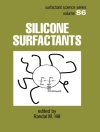There is need in environmental research for a book on fresh waters including rivers and lakes. Compared with other books on the topic, this book has a unique outline in that it follows pollution from sources to impact. Included in the text is the treatment of various tracers, ranging from pathogens to stable isotopes of elements and providing a comprehensive discussion which is lacking in many other books on pollution control of natural waters. Geophysical processes are discussed emphasizing mixing of water, interaction between water and the atmosphere, and sedimentation processes. Important geochemistry processes occurring in natural waters are described as are the processes specific to nutrients, organic pollutants, metals, and pathogens in subsequent chapters. Each of these chapters includes an introduction on the selected groups, followed by the physicochemical properties which are the most relevant to their behavior in natural waters, and the theories and models to describe their speciation, transport and transformation. The book also includes the most up to date information including a discussion on emerging pollutants such as brominated and phosphate flame retardants, perflurochemicals, and pharmaceutical and personal care products. Due to its importance an ecotoxicology chapter has been included featuring molecular biological methods, nanoparticles, and comparison of the basis of biotic ligand model with the Weibull dose-response model. Finally, the last chapter briefly summarizes the regulations on ambient water quality.
Tabela de Conteúdo
PREFACE
1. TRANSPORT OF POLLUTANTS
1.1 Introduction
1.2 Advection Diffusion Equation with Reaction
1.3 Steady-State Mixing in Estuaries
1.4 Time-Dependent Mixing in Rivers and Soil Systems
1.5 Vertical Mixing
1.6 Hydrodynamic Models
1.7 Groundwater Plumes
1.8 Sediment Mixing
1.9 REFERENCES
2. SEDIMENTATION PROCESSES
2.1 Introduction
2.2 ¯210Pb dating of sediments
2.3 ¯137Cs and ¯239+240Pu dating of sediments
2.4 Dated Records of Metals and Organic Pollutants
2.5 Deconvolution of Sedimentary Records
2.6 Chemical and Biological Degradation
2.7 Sediments as a Source of Pollutants
2.8 REFERENCES
3. ATMOSPHERIC INTERACTIONS
3.1 Introduction
3.2 Atmospheric Deposition Processes
3.3 Deposition and Gas Exchange of Organic Contaminants
3.4 Marine and Freshwater Microlayers
3.5 Case Study: Emission of VOCs from Wastewater Treatment Plants
3.6 The Fugacity Model
3.7 REFERENCES
4. WATER CHEMISTRY
4.1 Introduction
4.2 Carbonate and Alkalinity
4.3 Sulfur Chemistry
4.4 Impact of Global Warming on Natural Waters
4.5 REFERENCES
5. NUTRIENTS
5.1 Introduction
5.2 Input of Nutrients and Acidity
5.3 Eutrophication
5.4 Nitrogen
5.5 Phosphorus
5.6 Vitamins and Trace Metals
5.7 REFERENCES
6. METALS
6.1 Introduction
6.2 Trends, Measurement, and Toxicity
6.3 Sources and Reactions of Metals in Water
6.4 Behavior of Selected Metals in Water
6.5 Zero Valent Iron in Remediation of Contaminated Water
6.6 REFERENCES
7. ORGANIC POLLUTANTS
7.1 Introduction
7.2 Important Organic Pollutant Groups
7.3 of Organic Molecules
7.4 Basic Physicochemical Properties
7.5 Distribution of Organic Chemicals in Aquatic Environment
7.6 Transformations in Water
7.7 REFERENCES
8. PATHOGENS
8.1 Introduction
8.2 Bacteria
8.3 Protozoa
8.4 Molecular techniques for detection of pathogens
8.5 Pathogen Indicator Organisms and Surrogates
8.6 Bacterial Contamination of Recreational Waters
8.7 Pathogen Removal in Water and Wastewater Treatment
8.8 REFERENCES
9. TRACERS
9.1 Introduction
9.2 Natural vs. Artificial Tracers
9.3 Radioisotope
9.4 Stable isotopes
9.5 Applications of Tracer Technology
9.6 Chemical Mass Balance Modeling
9.7 Factor Analysis
9.8 REFERENCES
10. ECOTOXICOLOGY
10.1 Introduction
10.2 Bioassays
10.3 Molecular Biology Tools
10.4 Human Health
10.5 Endocrine Disrupting Chemicals
10.6 Types of Toxicity
10.7 Models and Toxicity Tests
10.8 Quality Criteria
10.9 REFERENCES
11. AMBIENT WATER QUALITY CRITERIA
11.1 Introduction
11.2 A Primer on Ambient Water Quality Regulations
11.3 Current U.S. Water Quality Criteria
11.4 Water Quality Data Bases
11.5 REFERENCES
Sobre o autor
Erik R. Christensen is a UWM Distinguished Professor Emeritus in the College of Engineering and Applied Science of the University of Wisconsin-Milwaukee. In 2008 he was nominated by UWM for Wisconsin Distinguished Professorship. He has published >80 journal articles, one book chapter, and edited a book: Contaminated Aquatic Sediments (1993), based on an international conference. He is an associate editor and frequent reviewer for many journals.
An Li is a professor of environmental chemistry in the School of Public Health at the University of Illinois at Chicago. She has written four book chapters, edited one book: Persistent Organic Pollutants in Asia (2007) and produced numerous journal articles as well as providing book and journal reviews.












